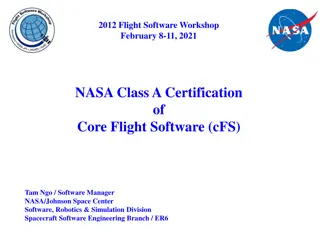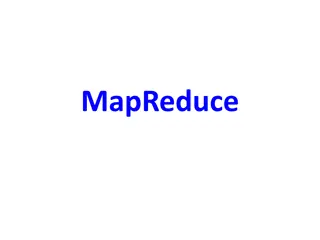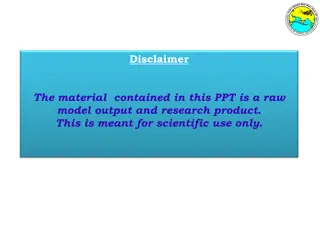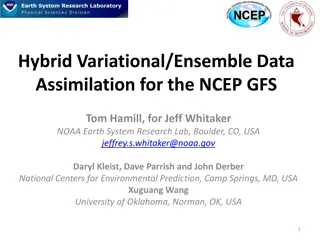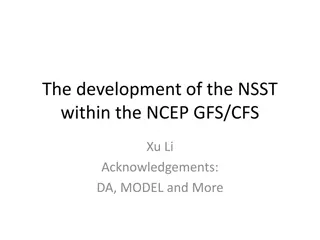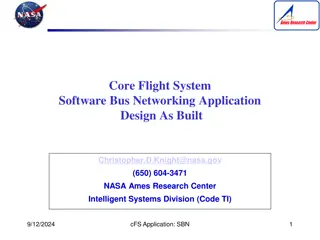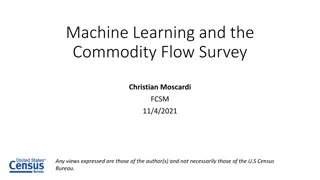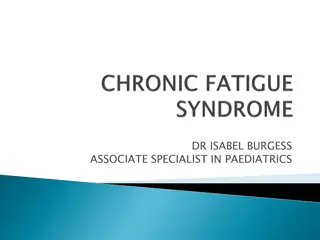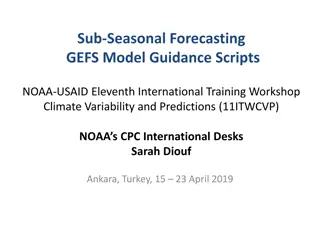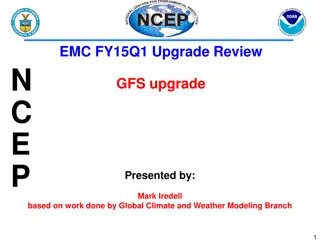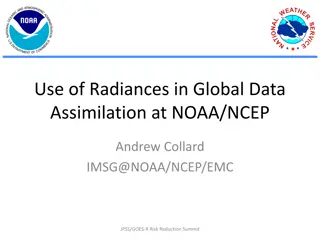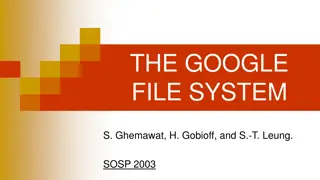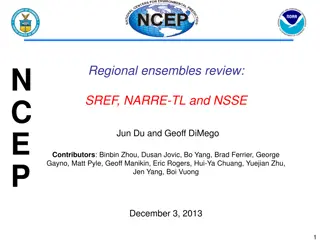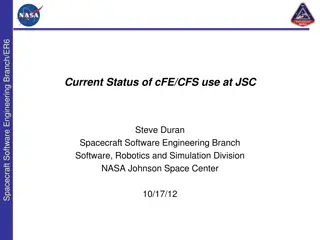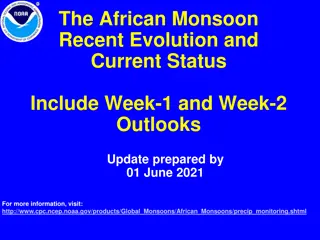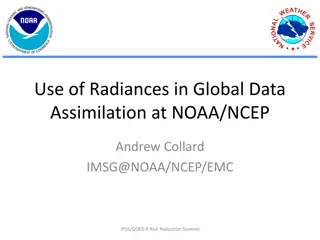Certification of Core Flight Software (cFS) for NASA's Gateway Program
The project aims to certify the Core Flight Software (cFS) for NASA's Gateway program, ensuring safety-critical flight software for Gateway's modules. The certification work is led by a dedicated team, enabling cost savings across the program. The goal is to deliver a class-A certified cFS bundle wh
1 views • 10 slides
Understanding MapReduce and Hadoop: Processing Big Data Efficiently
MapReduce is a powerful model for processing massive amounts of data in parallel through distributed systems like Apache Hadoop. This technology, popularized by Google, enables automatic parallelization and fault tolerance, allowing for efficient data processing at scale. Learn about the motivation
2 views • 33 slides
Experimental Lightning Flash Prediction Based on Real-Time Forecast
This PowerPoint presentation provides real-time experimental lightning flash prediction based on initial conditions data from GFS and WRF models. The forecast covers Day 1 and Day 2 with detailed insights on 24-hour accumulated total lightning flash counts and 3-hourly accumulated total lightning fl
0 views • 8 slides
Hybrid Variational/Ensemble Data Assimilation for NCEP GFS
Hybrid Variational/Ensemble Data Assimilation combines features from the Ensemble Kalman Filter and Variational assimilation methods to improve the NCEP Global Forecast System. It incorporates ensemble perturbations into the variational cost function, leading to more accurate forecasts. The approach
0 views • 22 slides
Understanding Near-Surface Sea Temperature Development in NCEP GFS/CFS
This informative piece delves into the evolution of Near-Surface Sea Temperature (NSST) within the NCEP GFS/CFS, discussing its significance in Numerical Weather Prediction (NWP) systems, the utilization of sea surface temperature (SST), and the T-profile near the sea surface. It covers the role of
0 views • 28 slides
Core Flight System Software Bus Networking Application Design
Core Flight System Software Bus Networking (SBN) is a NASA cFS application designed by Christopher D. Knight that connects local software buses to other cFS nodes. It features a modular network architecture, announce and heartbeat protocol, message remapping and filtering, and supports mixed-mode pe
0 views • 19 slides
Machine Learning in Commodity Flow Survey: Improving Data Quality
Exploring the application of machine learning in the Commodity Flow Survey (CFS), this report discusses the use of logistic regression models to correct and impute shipment data. The upcoming shift to eliminate manual SCTG product code provision aims to enhance respondent experience and response rat
0 views • 15 slides
Comprehensive Overview of Chronic Fatigue Syndrome in Pediatrics
Associate Specialist in Pediatrics, Dr. Isabel Burgess, provides a detailed insight into Chronic Fatigue Syndrome (CFS) in children. The diagnosis, symptoms, management principles, and impact on daily life are discussed, covering aspects from mild to very severe cases. Key signs such as debilitating
0 views • 28 slides
NCEP GEFS Sub-Seasonal Forecasting Exercise
In this exercise, you will generate NCEP GEFS deterministic week 1 and week 2 forecasts for precipitation and temperature anomaly. The practical steps include downloading the necessary data and scripts, extracting the files, and accessing the GEFS model guidance. This exercise focuses on understandi
0 views • 12 slides
EMC FY15Q1 Upgrade Review for GFS System
Upgrade review presented by Mark Iredell on the planned system changes and expected benefits for the Global Forecast System (GFS) in December 2014. Highlights include enhancements to modeling capabilities, forecast accuracy, and system optimizations across various components like analysis, model dyn
0 views • 28 slides
Overview of Wide Area Storage Systems
Wide Area Storage Systems play a crucial role in addressing the challenges faced by modern web-scale applications with geographically distributed users. This overview discusses key concepts such as GFS, Bigtable, Sinfonia, Calvin, and solutions involving multiple data centers across regions to enhan
0 views • 22 slides
Construction Schedule for Baseline and Hybrid A Configuration at J-POWER MDI-CFS Meeting, Ichinoseki City, Japan
This document outlines the construction schedule for the Baseline and Hybrid A configurations for the J-POWER MDI-CFS Meeting held in Ichinoseki City, Japan. It includes details of the Baseline, Hybrid A structures, assumption of the schedule, issues discussed, and the construction procedures for th
2 views • 12 slides
Advances in Global Data Assimilation at NOAA/NCEP: Radiance Data and Future Developments
Explore the utilization of radiance data in global data assimilation at NOAA/NCEP, focusing on the integration of various satellite instruments like AMSU-A, ATMS, MHS, and more. Recent and upcoming enhancements to the global data assimilation system are discussed, with an emphasis on changes to the
0 views • 5 slides
Understanding The Google File System (GFS)
The Google File System (GFS) introduced in 2003 by Ghemawat, Gobioff, and Leung, is designed for an unusual environment where component failures are common. GFS is specifically tailored for storing large files with primarily read-heavy workloads, emphasizing high sustained bandwidth over low latency
0 views • 33 slides
Overview of Cluster Storage Systems
Web-scale applications hosted in massive computing infrastructures require scalable storage systems. This overview covers different types of storage systems, including file systems and databases, emphasizing the key design ideas and pros/cons of Google File System (GFS).
0 views • 17 slides
Overview of 2014 NCEP Production Suite Review on Global Modeling
The 2014 NCEP Production Suite Review highlighted the significant implementation of the 13 km Global Forecast System (GFS). This major update involved substantial enhancements in resolution, observations, analysis, and physics, impacting various NCEP models and centers. The improved 13 km GFS brough
0 views • 20 slides
NCEP Regional Ensembles Review Summary
Completed WCOSS transition of both SREF and NARRE-TL in production, with upgrades and fixes for improved ensemble forecasting. Delivered interim upgrade packages for SREF, planned future upgrades, and introduced an experimental NCEP Storm-Scale Ensemble. Performance evaluation in a heavy rain event
0 views • 20 slides
Comparison of Frailty Screening Tools in the Emergency Department
Evaluation was done to determine the most suitable frailty screening tool for the Emergency Department at Beaumont Hospital. The study compared the Clinical Frailty Score (CFS), THINK FRAIL, InterRAI, and PRISMA-7. Results showed that the CFS was the most consistent tool, leading to a transition tow
0 views • 4 slides
Overview of Spacecraft Software Engineering Branch Activities
The Spacecraft Software Engineering Branch at NASA's Johnson Space Center (JSC) focuses on developing and implementing critical software for spacecraft systems. Their work includes utilizing the core Flight Executive (cFE) and Core Flight System (CFS) for various projects, such as the Morpheus lande
0 views • 10 slides
African Monsoon Recent Evolution & Outlooks Update
The recent evolution of the African monsoon shows varied rainfall patterns in different regions over the past 7, 30, and 90 days. Highlights include below-average rainfall in parts of East and Central Africa, above-average rainfall in West Africa, and outlooks for increased or decreased rainfall in
0 views • 12 slides
Advancements in Global Data Assimilation at NOAA/NCEP
Utilizing a range of radiance data sources, NOAA/NCEP has implemented significant upgrades to its Global Data Assimilation System. Recent and upcoming changes focus on improving model levels, introducing new observation errors, and expanding all-sky assimilation capabilities. The future direction in
0 views • 5 slides
